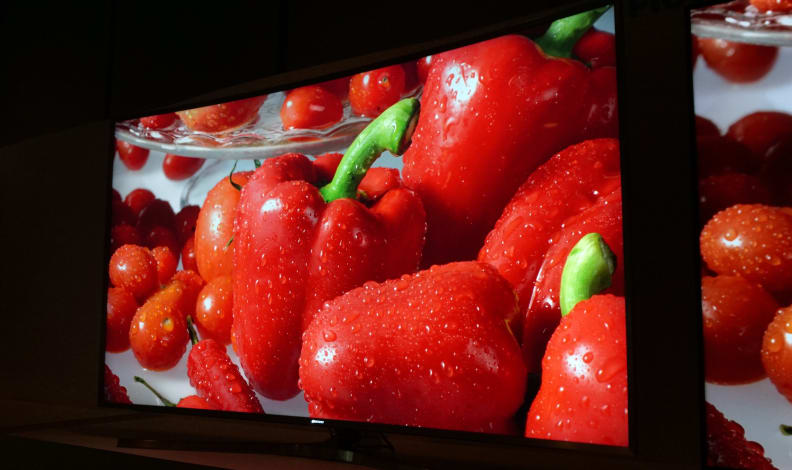 Credit:
Credit:
Recommendations are independently chosen by Reviewed's editors. Purchases made through the links below may earn us and our publishing partners a commission.
[

This article is sponsored content and was written in collaboration with the sponsor.
You’ve no doubt noticed how gorgeous today’s televisions are – just take a stroll down the TV aisle of your local big box store to see for yourself – and a relatively new technology might have to do with this.
It’s called “quantum dot,” and while it might sound like something out of a sci-fi movie, it could be what’s behind this unprecedented picture quality.
First of all, quantum dot offers a better brightness than TVs without quantum dot, thanks to teeny tiny “nano” crystals -- microscopic dots as small as one billionth of a meter -- that are laid out in sheets in front of the television’s backlight source.
All TVs need to produce light, obviously. And of course, that light needs to be different colors on different parts of the screen. Put a little green here, some brown there, and—voilà—you have an image of a tree.
Most TVs have a backlight that shoots light through a grid of color filters. It works well, but in older TVs those filters end up blocking a lot of the light. They don’t always get the colors perfect, either. So now science has found a superior way to transform that light into color, and its name is quantum dot.
Quantum dots are much more efficient at transferring the backlight’s full potential, resulting in higher peak brightness, and thus enabling support for “high dynamic range” (or HDR) content. HDR-enabled televisions display pictures with a greater difference in the brightest and darkest parts of the image, and therefore look a lot more lifelike.

Quantum dots allow TVs to hit colors they were never able to previously, making the picture incredibly lifelike.
And because the actual diameters of the dots are so tightly engineered—we’re talking fractions of the width of human hair—the color reproduction is also far beyond what was possible just a few years ago.
All 2016 Samsung SUHD TVs incorporate quantum dots into their panels, which means just one thing: movie night is at your house from now on.

